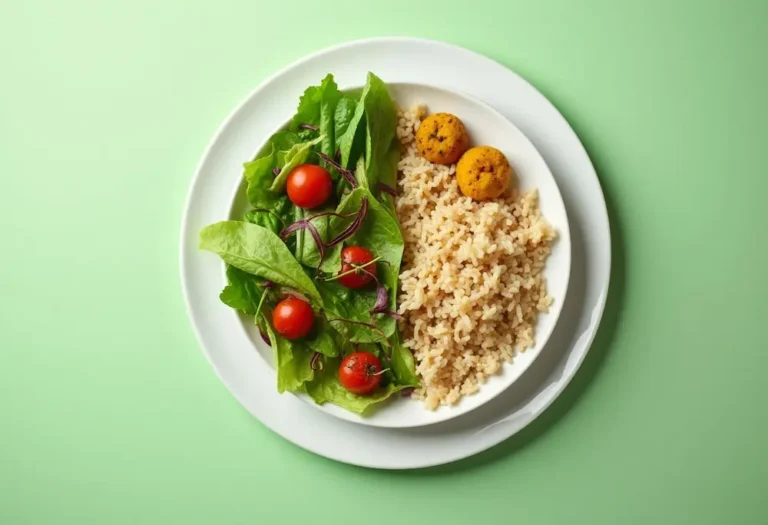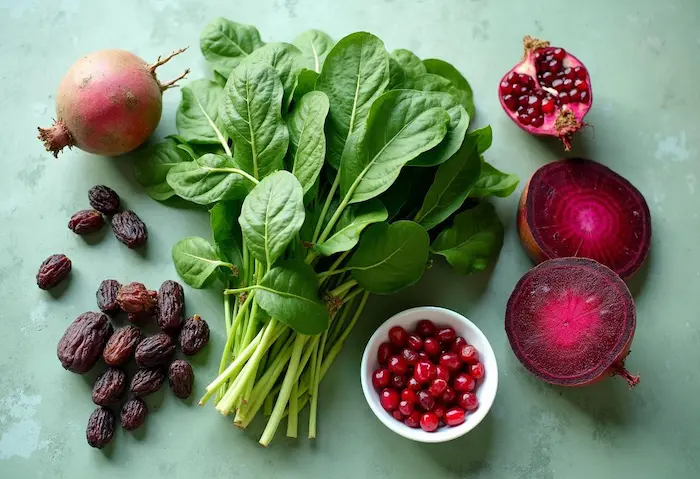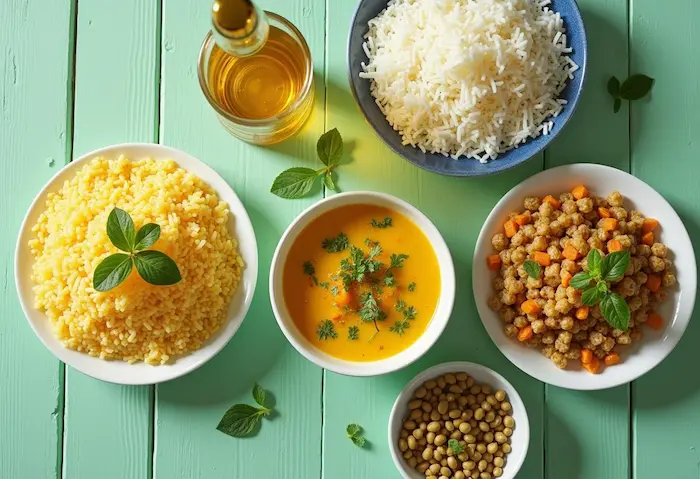Understanding is your key to staying healthy, energetic, and vibrant during this beautiful but challenging time of year. As the rain patters against the windows in Pune tonight, there’s a certain magic and coziness in the air. But with this dampness and coolness also comes a unique set of health challenges—sluggish digestion, a higher risk of infections, and a craving for foods that aren’t always the best for us.
For thousands of years, Ayurveda has taught us the wisdom of Ritucharya, the practice of adapting our lifestyle and diet to the seasons. According to this ancient science, the monsoon is a time when our digestive fire (agni) is naturally weaker, and our bodies are more susceptible to imbalances.
But don’t worry, this isn’t about restriction. It’s about making smart, simple swaps to support your body’s needs. Let’s explore this Ayurvedic roadmap to monsoon wellness.
Table of Contents
The Monsoon Mindset: Why Your Digestion Changes with the Rains
In Ayurveda, the monsoon season is characterized by an aggravation of the Vata dosha (the energy of air and space) and a dampening of the digestive fire (agni). This is why you might feel more bloated, gassy, or generally sluggish after meals during this time. The goal of a monsoon diet is to eat foods that are easy to digest, pacify Vata, and help to gently stoke your digestive fire, all while boosting your immunity against seasonal bugs.1
Foods to Embrace: What to Eat During the Monsoon Season
Focus on foods that are nourishing, warming, and easy on your gut.
1. Warm, Light, and Well-Cooked Foods
Your digestive system is already working at a slower pace, so give it a helping hand.
- Why: Warm, cooked foods are pre-digested to an extent, making them much easier for your body to process.
- Examples: Opt for comforting, warm meals like moong dal khichdi, vegetable soups, steamed vegetables (sabzi), and freshly prepared rotis.2
2. Bitter and Pungent Vegetables
Nature is intelligent; the vegetables that grow in this season are often exactly what our bodies need.
- Why: Bitter vegetables like bitter gourd (karela) and neem, and pungent spices like turmeric and ginger, have natural antimicrobial and antiseptic properties that help to ward off infections.3
- Examples: Include gourds like bottle gourd (lauki)4 and snake gourd (parwal), as well as bitter gourd in your diet. Be generous with ginger, garlic, turmeric, and black pepper in your cooking.5
3. Seasonal Fruits
While it’s tempting to eat all kinds of fruit, sticking to the season’s offerings is wisest.
- Why: Seasonal fruits are at their nutritional peak and are less likely to be overly water-logged.6
- Examples: Pomegranates (anaar), apples, pears, plums (aloo bukhara), and cherries are excellent choices.7 They are packed with antioxidants that boost immunity.
4. Herbal Teas and Spices (Masala Chai & Kadha)
A warm, spiced beverage is the perfect monsoon companion.8
- Why: Spices like ginger, cinnamon, clove, and black pepper are warming and have powerful antibacterial and anti-inflammatory properties. They help to soothe a sore throat and keep colds at bay.
- Examples: Enjoy a daily cup of homemade masala chai or a simple, healing tea made by boiling ginger, tulsi, and black peppercorns in water.
5. Probiotic-Rich Foods
A healthy gut is the foundation of a strong immune system.
- Why: Probiotics introduce beneficial bacteria to your gut, which is your body’s first line of defense against pathogens.9
- Examples: A small bowl of homemade yogurt (dahi) is good, but thin, spiced buttermilk (chaas) is even better as it’s lighter and easier to digest.
Foods to Limit: What to Avoid During the Monsoon Season
Now let’s look at the other side of the coin. Knowing what to eat and what to avoid during the monsoon season involves limiting foods that can tax your digestion or increase your risk of infection.10
1. Leafy Green Vegetables (Unless Cooked Thoroughly)11
This might sound counterintuitive, but there’s a good reason for this traditional advice.
- Why: The damp environment of monsoon means that leafy greens like spinach and cabbage can be laden with dirt, mud, and germs that are hard to wash away completely, increasing the risk of stomach infections.12
- The Rule: If you do eat them, make sure they are washed meticulously (perhaps in a salt or vinegar solution) and cooked very, very well. It’s best to avoid eating them raw.
2. Raw Foods and Salads
Similar to the point above, raw foods pose a higher risk during this season.13
- Why: Raw vegetables can carry bacteria and viruses that can cause infections.14 Since your digestion is already weak, it’s best to stick to cooked food.15
- The Rule: Swap your raw salads for steamed or grilled vegetable preparations.16
3. Street Food (Especially Fried Items and Chaat)
The craving for hot bhajjis and tangy pani puri is strongest when it rains, but this is the riskiest time to indulge.
- Why: The risk of using contaminated water, unhygienic oils, and improperly washed ingredients is at its peak during the monsoon. This can lead to serious water-borne diseases like typhoid and jaundice.
- The Rule: If you crave these snacks, prepare them at home where you can control the quality of the ingredients.
4. Excessive Dairy and Heavy Foods
Heavy dairy products can be difficult to digest during this season.
- Why: According to Ayurveda, heavy foods like cheese, full-fat milk, and rich curries can slow down your already sluggish digestion and may increase phlegm (kapha).
- The Rule: Opt for lighter dairy options like buttermilk (chaas) and limit your intake of heavy, creamy foods.
5. Fizzy Drinks
Carbonated drinks are best avoided year-round, but especially during monsoon.
- Why: They can reduce mineral levels in the body and further weaken the digestive process, leading to gas and bloating.
- The Rule: Quench your thirst with warm water, herbal teas, or thin soups instead.17
Conclusion: Enjoying the Monsoon, Healthily and Mindfully
The monsoon is a season of rejuvenation and beauty. By making these simple, mindful shifts in your diet, you can support your body’s natural wisdom, strengthen your immunity, and feel light and energetic. It’s not about missing out; it’s about tuning in to what your body truly needs.
So go ahead, sip that warm ginger tea, enjoy a comforting bowl of khichdi, and embrace the magic of the rains, knowing you are nourishing yourself from the inside out.
What is your favourite healthy monsoon comfort food? Share your family’s recipes and traditions with our community in the comments below!




